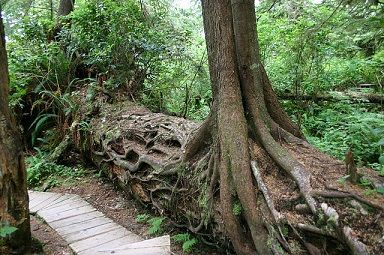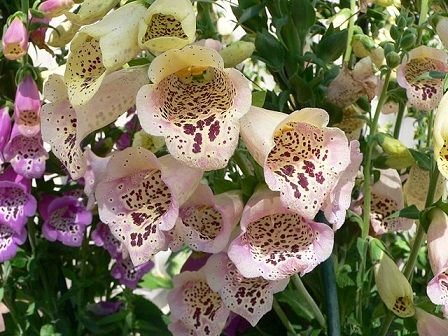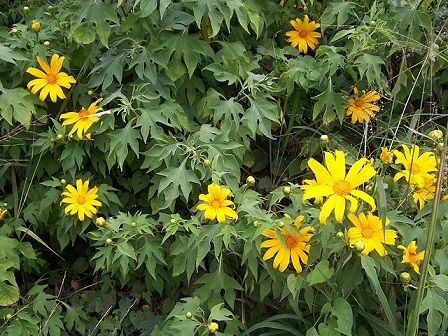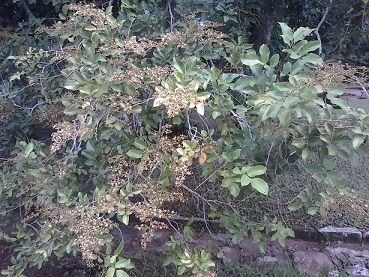The chemical war

credit: wikimedia common
Chemical wars are not just limited to the Syrian unrest or the war in Baghdad. It is another ball game entirely as far as plants are concerned. The 'survival of the fittest' war in the ecosystem is a continuous one, you either give up or own up. This has made a lot of plants to resort to different means of survival, sometimes using extreme hostility by synthesizing chemicals to ward off competitors as well as confer some advantage to them within the ecosystem. These 'allelochemicals' function in different ways. While some work by repressing the growth of neighboring plants, others prevent the germination of nearby propagules in form of seeds, roots, stems etc.
What exactly is allelopathy?
The phenomenon by which plants within the same habitats produce chemicals which confer some survival advantages to them and repress the growth of their neighbors is referred to as allelopathy. While some of these chemicals are produced to attack, others are produced for defense against predatory organisms such as herbivores. The chemicals are released from the plants that produce them through various mechanisms such as volatilization, leaching from plant's parts such as leaves and stems, exudation from underground roots and decomposition of various plant residues within the soil.

foxglove plant (credit: wikimedia common)
The effects of some of these allelochemicals can be felt in the molecular, structural, biochemical, physiological and or ecological features of the victim plants. Significant effects of allelochemicals have been reported on plant's respiration, photosynthesis, and translocation of nutrients. The chemicals are in form of secondary metabolites such as terpenoids, phenolic compounds, organic cyanides and long chain fatty acids.
On few occasions, allelopathic effects have been reported to be a mixture of positive and negative. The phenomenon is mostly attributed to invasive plant species which utilize different bioactive compounds to repress other plant competitors, establishing their offsprings and eventually becoming invasive in the process. The repressive effects of some of the allelochemicals are actually being utilized in the production of herbicides. Plants that have been reported to have allelopathic abilities include Digitalis species (foxgloves), Pinus species, Eucalyptus species, Tithonia species, and many others.
Demonstrating allelopathy

T. diversifolia (credit: wikimedia common)
In 2011, Oke and his co-researchers investigated Tithonia diversifolia for allelopathy. The plant was chosen simply because it was observed to be invasive in nature, taking over almost roadside vegetations within major towns in Nigeria. Above ground biomass consisting of stems and leaves were used, the plant being a herb. Aqueous extract of the harvested portion was prepared and tested on the growth of seedlings of three woody species, Monodora tenuifolia, Dialium guineenses and Hildegardia barterii*. The extract was used to feed the seedlings for a period of three months while ordinary water was used to feed the control group. During this period, growth parameters such as height, number of leaves, number of branches and chlorophyll contents of the leaves of the plants were measured and recorded.

D. guineense (credit: wikimedia common)
At the end of the experiment, data were subjected to appropriate statistical analysis and it was discovered that the aqueous extract of T. diversifolia had both inhibitory and promoting effects. While it significantly inhibited the growth parameters of D. guineenses, it promoted the growth of H. barterri and M. tenuifolia. The experiment effectively demonstrated that allelopathic chemicals within plants can actually have stimulatory effects on the growth of neighboring plants as well having inhibitory effects on some others.
Conclusion
Plant produce some chemical substances in the course of their interactions within the ecosystem.The interaction could be in form of plant-plant or plant-other organisms. These bioactive chemicals are known as allelochemicals while production of these chemicals which either repress or promote the growth of other organisms is known as allelopathy. The phenomenon is quite synonymous with invasive species and has been demonstrated by several researchers.
Thank you for reading!
[1]science direct: Allelopathy and the Role of Allelochemicals in Plant Defence
[2]springer: Allelopathic interactions between plants. Multi-site action of allelochemicals
[3]OKE, SAMSON OLAJIDE et al. Effects of Aqueous Shoot Extract of Tithonia diversifolia on the Growth of Seedlings of Monodora tenuifolia (Benth.), Dialium guineense (Willd.) and Hildegardia barteri (Mast.) Kosterm. Notulae Scientia Biologicae, [S.l.], v. 3, n. 2, p. 64-70, may 2011.
[4]jstor.org: Allelochemicals from Plants as Herbicides
image credit
image 1
image 2
image 3
image 4

 credit: wikimedia common
credit: wikimedia common  foxglove plant (credit: wikimedia common)
foxglove plant (credit: wikimedia common) D. guineense (credit: wikimedia common)
D. guineense (credit: wikimedia common)
Interesting! I'm into gardening, and have read that some plants like to be planted near each-other because they "help" each-other fend off insects, etc, but I had never read the opposite, that some plants try to "kill" other nearby plants. Super cool stuff!
It is really a complex ecosystem for plants. Most of the invasive plants thrive through secretion of allelochemicals which keeps away other plants, allowing them to dominate the environment.
plants helping other plants to grow, those are the best buddies lol
best of friends and worst of enemies. really
This is surely a refreshing course on allelopathy
In other words, a plant has friends and enemies
Funny creatures
exactly. complex ecosystem
please vote mee
ok